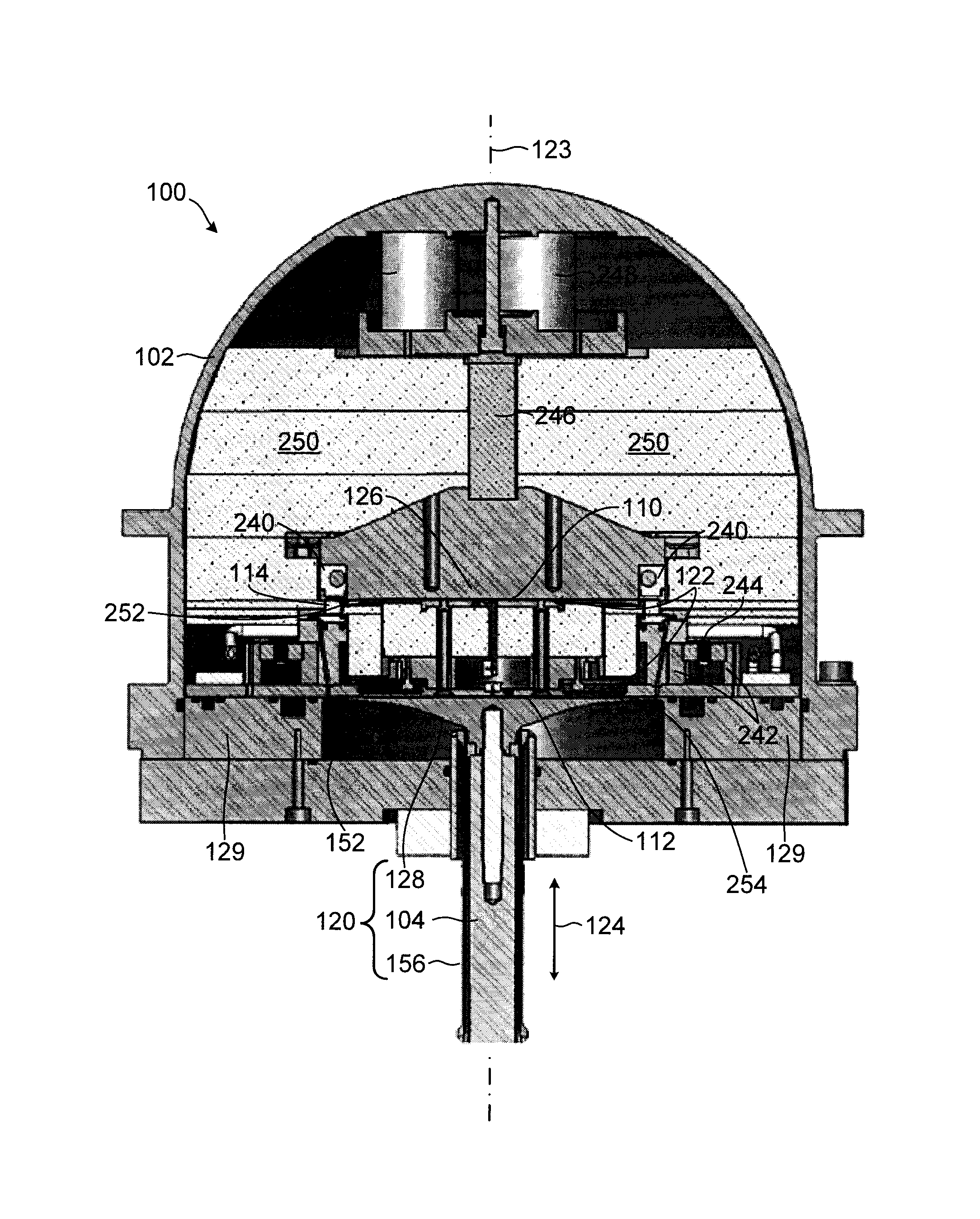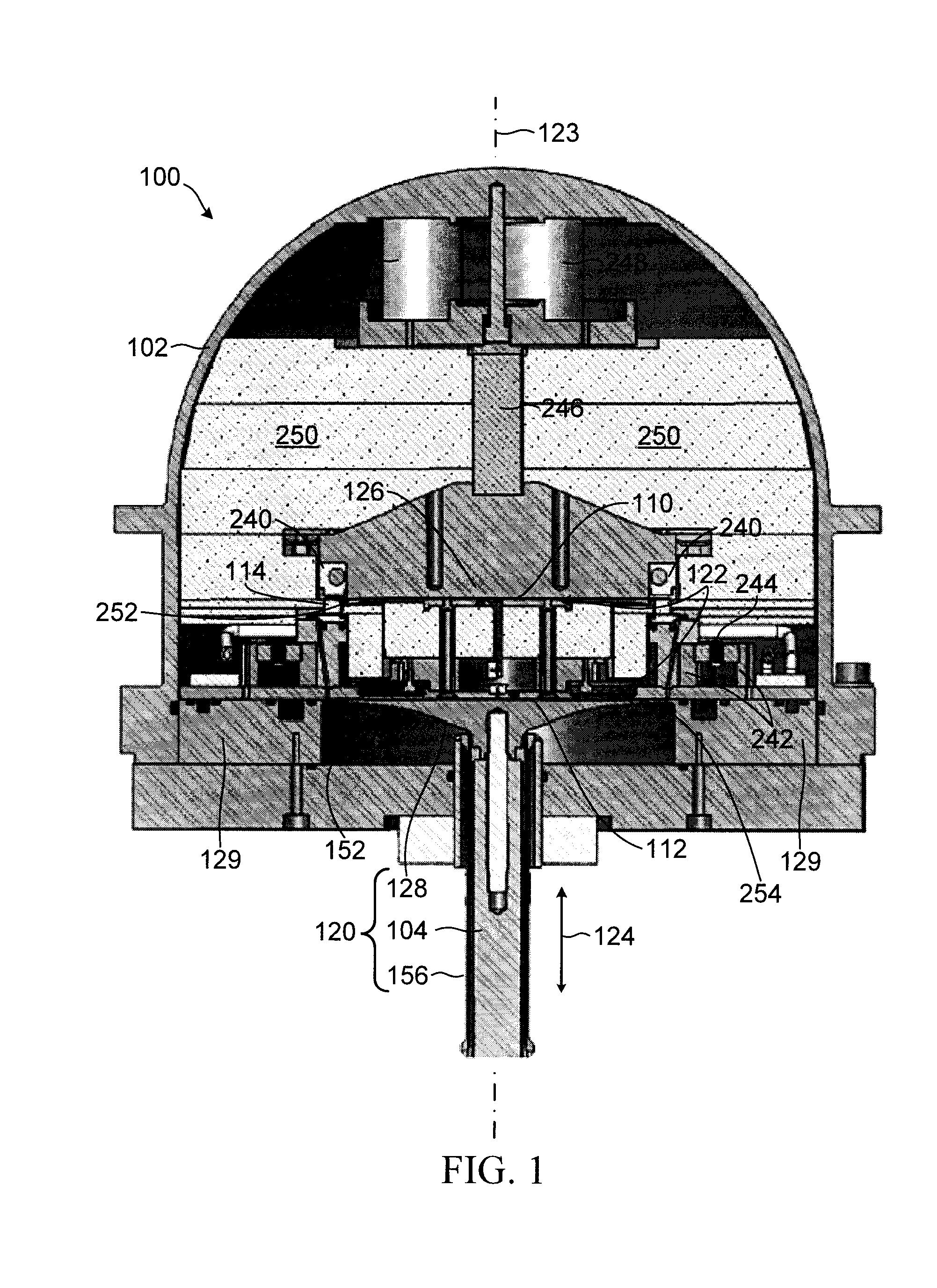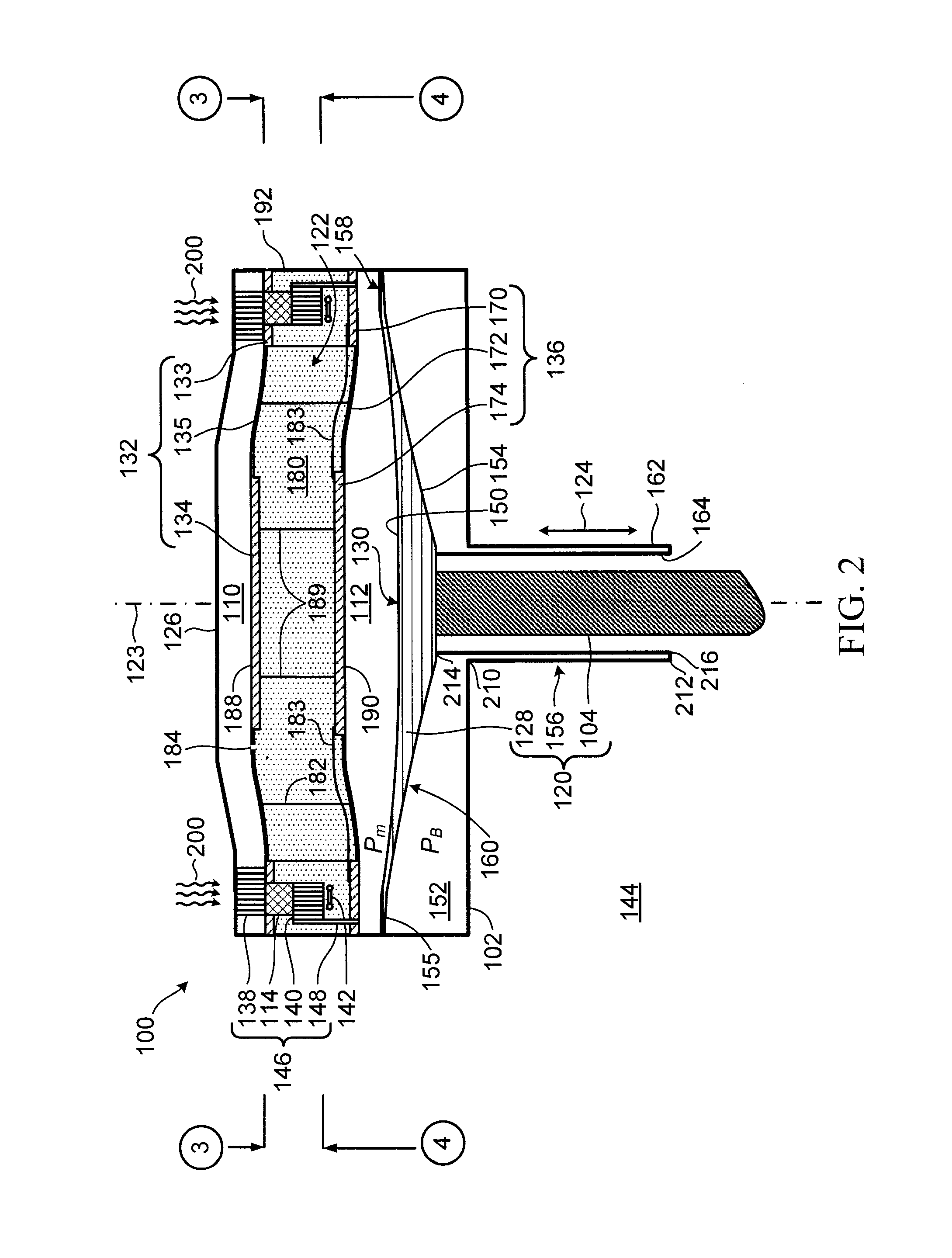Stirling cycle transducer for converting between thermal energy and mechanical energy
a transducer and thermal energy technology, applied in the direction of stirling type engines, machines/engines, hot gas positive displacement engine plants, etc., can solve the problems of difficulty in making high pressure and high temperature reciprocating or rotating gas seals, and affecting the operation of stirling engines. , to achieve the effect of preventing significant gaseous communication, reducing the temperature of the working gas flowing, and reducing hysteresis losses
- Summary
- Abstract
- Description
- Claims
- Application Information
AI Technical Summary
Benefits of technology
Problems solved by technology
Method used
Image
Examples
Embodiment Construction
Introduction
[0076]The output power of a Stirling engine Wout empirically follows the formula:
[0077]Wout=NW·Pm·f·VsTh-TcTh+Tc,Eqn1
where[0078]NW is the “West” number (“Principles and Applications of Stirling Engines”, Colin D. West, Van Nostrand Reinhold, 1986);[0079]Pm, is the mean working-gas pressure;[0080]f is the operating frequency;[0081]Th, Tc, are the respective hot and cold side temperatures; and[0082]Vs is the volume swept by the power piston.
[0083]In a diaphragm engine, the diaphragm is usually fabricated from a metal such as steel, which restricts a maximum operating deflection of the diaphragm thus placing a constraint on the swept volume VS in Eqn 1. The swept volume constraint may be compensated for by operating at increased frequency, increased temperature differential, and / or increased pressure in order to provide a greater power output for a particular engine. The West number NW accounts for losses and an engine design that minimizes losses will have a greater Wes...
PUM
 Login to View More
Login to View More Abstract
Description
Claims
Application Information
 Login to View More
Login to View More - R&D
- Intellectual Property
- Life Sciences
- Materials
- Tech Scout
- Unparalleled Data Quality
- Higher Quality Content
- 60% Fewer Hallucinations
Browse by: Latest US Patents, China's latest patents, Technical Efficacy Thesaurus, Application Domain, Technology Topic, Popular Technical Reports.
© 2025 PatSnap. All rights reserved.Legal|Privacy policy|Modern Slavery Act Transparency Statement|Sitemap|About US| Contact US: help@patsnap.com



